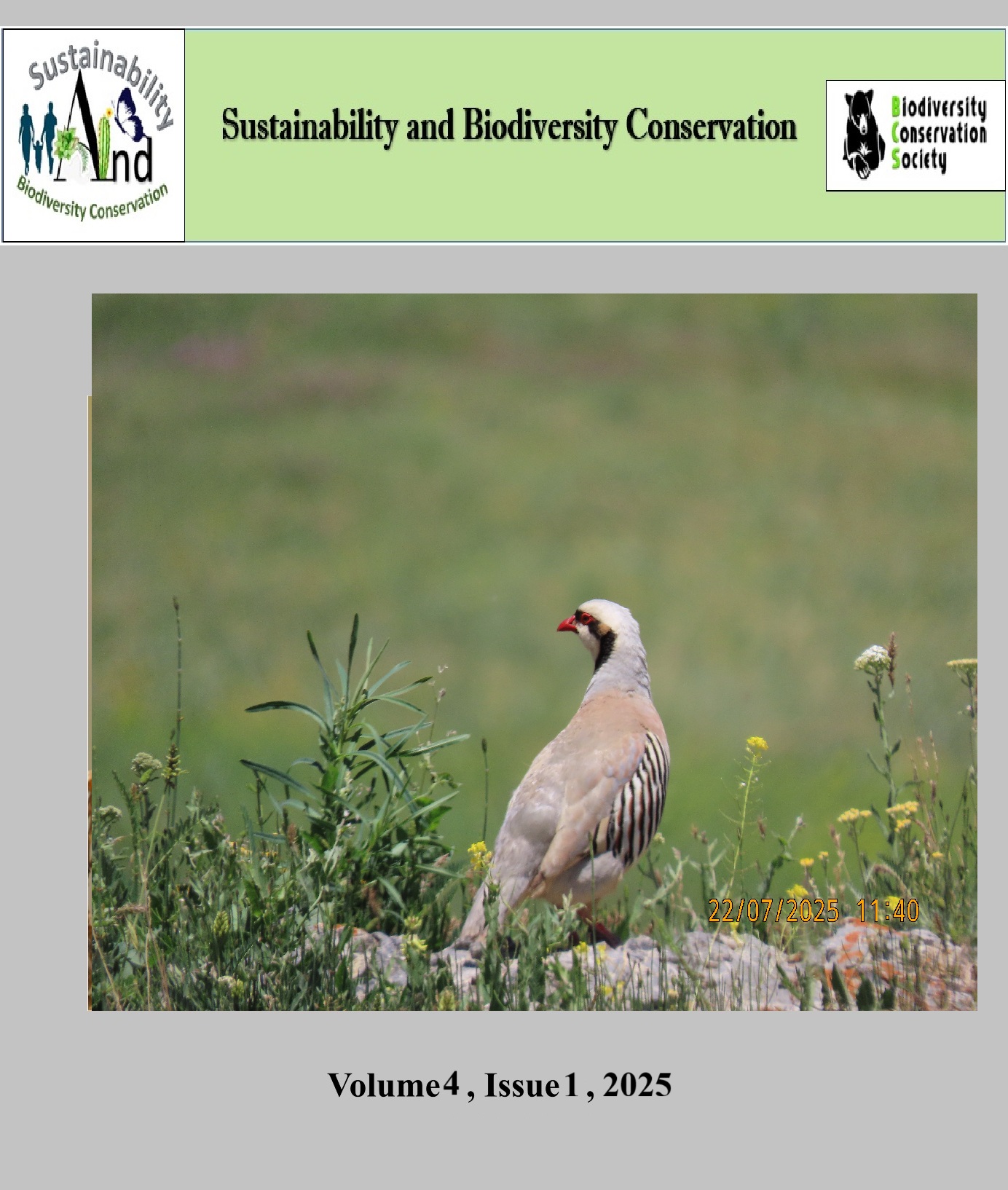Detection of Paradoxurus philippinensis in Mt. Calavite Wildlife Sanctuary (MCWS), Philippines, on different moon phases
DOI:
https://doi.org/10.5281/zenodo.14967520Keywords:
Paradoxurus philippinensis, Moon phases, Non-invasive sampling, Nocturnal activityAbstract
Using a non-invasive sampling established in a 14 km² land area of MCWS, observation of Paradoxorus philippinensis concerning different cycles of the moon showed that most records of appearance were during the Half and Gibbous phases. A multinomial Chi-Square test points out that the amount of civet detection on various moon phases is significantly different, implicating possible inferences on the effects of moon phases in Philippine palm civet’s nocturnal activity.
References
Alviola, P. A., Pampolina, N. M., Coracero, E. E., Gatdula, J. C. V., Cabahug, D., Duquil, R., ... & Suniega, M. J. A. (2023). Vertebrate faunal diversity in Mt. Calavite Wildlife Sanctuary, Occidental Mindoro, Philippines: An assessment using the Biodiversity Assessment and Monitoring System (BAMS). Journal of Wildlife and Biodiversity, 7(3), 24-39.
Bhatt, U., Singh Adhikari, B., Habib, B., & Lyngdoh, S. (2021). Temporal interactions and moon illumination effect on mammals in a tropical semi-evergreen forest of Manas National Park, Assam, India. Biotropica, 53(3), 831-845.
Bonenfant, C., Rutschmann, A., Burton, J., Boyles, R., García, F., Tilker, A., & Schütz, E. (2023). Cast away on Mindoro island: Lack of space limits population growth of the endangered tamaraw. Animal Conservation, 26(4), 546-557.
Challet, E. (2007). Minireview: Entrainment of the suprachiasmatic clockwork in diurnal and nocturnal mammals. Endocrinology, 148(12), 5648-5655.
Clark, A. H. (1914). Nocturnal animals. Journal of the Washington Academy of Sciences, 4(6), 139-142. http://www.jstor.org/stable/24525845
Crawford, S. C. (1934). The habits and characteristics of nocturnal animals. The Quarterly Review of Biology, 9(2), 201-214.
de Guia, P., Chavez, G., & Fernandez, D. A. (2020). Distribution and diet of the common palm civet (Paradoxurus philippinensis) in the Mt. Makiling Forest Reserve, Luzon Island, Philippines. Journal of Wildlife and Biodiversity, 13, 28-33.
Faulkner, S. C., Stevenson, M. D., Verity, R., Mustari, A. H., Semple, S., Tosh, D. G., & Le Comber, S. C. (2015). Using geographic profiling to locate elusive nocturnal animals: A case study with spectral tarsiers. Journal of Zoology, 295(4), 261-268.
Halle, S. (2000). Ecological relevance of daily activity patterns. In Activity patterns in small mammals: An ecological approach (pp. 67-90). Springer Berlin Heidelberg.
Joshi, A. R., David Smith, J. L., & Cuthbert, F. J. (1995). Influence of food distribution and predation pressure on spacing behavior in palm civets. Journal of Mammalogy, 76(4), 1205-1212.
Linley, G. D., Pauligk, Y., Marneweck, C., & Ritchie, E. G. (2020). Moon phase and nocturnal activity of native Australian mammals. Australian Mammalogy, 43(2), 190-195.
Marcone, M. F. (2004). Composition and properties of Indonesian palm civet coffee (Kopi Luwak) and Ethiopian civet coffee. Food Research International, 37(9), 901-912.
Nakashima, Y., Inoue, E., Inoue-Murayama, M., & Sukor, J. A. (2010). High potential of a disturbance-tolerant frugivore, the common palm civet Paradoxurus hermaphroditus (Viverridae), as a seed disperser for large-seeded plants. Mammal Study, 35(3), 209-215.
Nichols, J. D., & Williams, B. K. (2006). Monitoring for conservation. Trends in Ecology and Evolution, 21, 668-673.
O’Connell, A. F., Nichols, J. D., & Karanth, K. U. (2011). Introduction. In A. F. O’Connell, J. D. Nichols, & K. U. Karanth (Eds.), Camera traps in animal ecology (pp. 1-10). Springer. https://doi.org/10.1007/978-4-431-99495-4_1
Petersen, C. (2017). Barrel cortex circuits. In Reference module in biomedical sciences. Elsevier. https://www.sciencedirect.com/science/article/abs/pii/B9780128012383993218
Pratas‐Santiago, L. P., Gonçalves, A. L., Nogueira, A. J., & Spironello, W. R. (2017). Dodging the moon: The moon effect on activity allocation of prey in the presence of predators. Ethology, 123(6-7), 467-474.
Prugh, L. R., & Golden, C. D. (2014). Does moonlight increase predation risk? Meta‐analysis reveals divergent responses of nocturnal mammals to lunar cycles. Journal of Animal Ecology, 83(2), 504-514.
Steinlechner, S. (2012). Nocturnal animal - an overview. ScienceDirect. https://www.sciencedirect.com/topics/biochemistry-genetics-and-molecular-biology/nocturnal-animal
Downloads
Published
How to Cite
Issue
Section
License
Copyright (c) 2023 Sustainability and Biodiversity Conservation

This work is licensed under a Creative Commons Attribution 4.0 International License.


